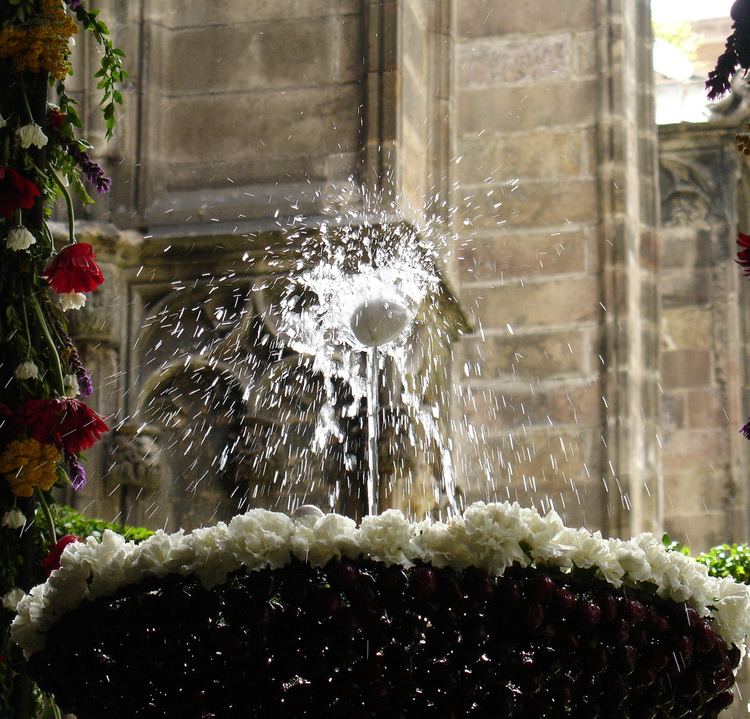 | ||
The dancing egg (L'ou com balla in Catalan) is an old tradition that takes place in several towns in Catalonia during the feast of Corpus Christi. The tradition probably started at the Cathedral of Barcelona.
Contents
History
There is evidence from the 16th century that acolytes would place a dancing egg on the fountain of the Barcelona Cathedral's cloister. To accomplish this, the egg would have been emptied, with wax used to fill the hole and add some weight. When placed over a water jet from a fountain, the egg starts turning without falling, and thus "dances." Generally, fountains with a dancing egg are also decorated with seasonal flowers and fresh fruits, like cherries, which cover the bowl of the fountain, as well as weaver's broom and carnations.
From the Cathedral, the tradition also started at the patio of the neighboring Casa de l'Ardiaca (Archdeacon's House), and it spread to several other courtyards of the Barcelona city center beginning in the 1980s. More recently, other Catalan cities and towns assumed the tradition.
Modern examples
In Barcelona a dancing egg is placed in several locations within the Gothic Quarter during Corpus Christi: Barcelona Cathedral the Casa de l'Ardiaca, in addition to the courtyards of the Ateneu Barcelonès, the Archives of the Crown of Aragon (at the Lloctinent Palace), the Royal Academy of Arts of Barcelona, Frederic Marès Museum, the cloister of the Monastery of Jonqueres (adjacent to the Puríssima Concepció basilica), Centelles Palace, and the History Museum of Barcelona.
